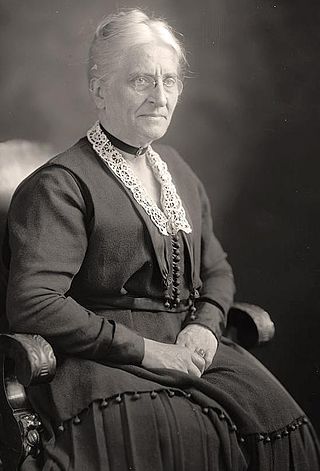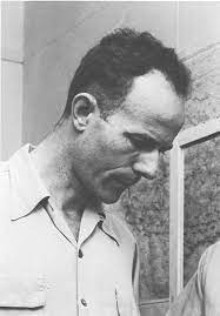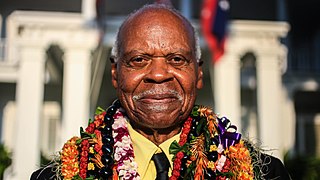Related Research Articles

John Hart Ely was an American legal scholar. He was a professor of law at Yale Law School from 1968 to 1973, Harvard Law School from 1973 to 1982, Stanford Law School from 1982 to 1996, and at the University of Miami Law School from 1996 until his death. From 1982 until 1987, he was the 9th dean of Stanford Law School.

Charles William Woodworth was an American entomologist. He published extensively in entomology and founded the Entomology Department at the University of California, Berkeley. He was the first person to breed the model organism Drosophila melanogaster in captivity and to suggest to early genetic researchers at Harvard its use for scientific research. He spent four years at the University of Nanking, China, where he effected the practical control of the city's mosquitoes. He drafted and lobbied for California's first insecticide law and administered the law for 12 years. The Pacific Branch of the Entomological Society of America named its annual career achievement award the C. W. Woodworth Award.

Clinton Hart Merriam was an American zoologist, mammalogist, ornithologist, entomologist, ecologist, ethnographer, geographer, naturalist and physician. He was commonly known as the 'father of mammalogy', a branch of zoology referring to the study of mammals.

Charles Lester Marlatt (1863–1954) was an American entomologist. Born in 1863 at Atchison, Kansas, he was educated at Kansas State Agricultural College, where he was assistant professor for two years. He is the person who introduced the ladybug insect Chilocorus similis into the United States to control the San Jose scale insect, which was first discovered in San Jose, California in 1880 by John Henry Comstock and named by him. Marlatt worked for the Bureau of Entomology, United States Department of Agriculture. In 1912 he was appointed chairman of the Federal Horticultural Board. He was president of the Entomological Society of Washington in 1897–98 and of the American Association of Economic Entomologists in 1899.
The Bureau of Entomology was a unit within the Federal government of the United States from 1894 to 1934. It developed from a section of the Department of Agriculture which had been working on entomological researches and allied issues relating to insects. In 1934 it was merged with the Bureau of Plant Quarantine to form the Bureau of Entomology and Plant Quarantine. A later merger with the Bureau of Animal Industry created the Agricultural Research Service in 1953.

Nathan Banks was an American entomologist noted for his work on Neuroptera, Megaloptera, Hymenoptera, and Acarina (mites). He started work on mites in 1880 with the USDA. In 1909 he reported many Costa Rican species with several new species saying "During the past few years the writer has received large series of spiders and daddy-longlegs from Costa Rica for identification". In 1915 he authored the first comprehensive English handbook on mites: A Treatise on the Acarina, Or Mites.

Alexandre Arsène Girault was an American entomologist specializing in the study of chalcid wasps. An eccentric and controversial figure, Girault was also a prolific and dedicated entomologist. He published more than 325 papers and described over 3000 new taxa from Australia.

Stephen Taber III. was an American apiologist, noted authority and author in the field of artificial insemination of queen bees for the purpose of developing disease resistant and gentle bee colonies.

Dr. Clara Southmayd Ludlow (1852–1924) was an American entomologist, the first woman known to publish extensively on the taxonomy of mosquitoes and their occurrence in relation to the incidence of mosquito-borne diseases. She forged a notable career in medical entomology during a time when women were rare among the ranks of entomologists, and she did so in association with the military, where the presence of women was even more rare. Details of her life have been addressed in two publications, from which the following summary is drawn.

Harrison Gray Dyar Jr. was an American entomologist. Dyar's Law, a pattern of geometric progression in the growth of insect parts, is named after him. He was also noted for eccentric pursuits which included digging tunnels under his home. He had a complicated personal life and along with his second wife he adopted the Baháʼí Faith.

Charles Henry Tyler Townsend was an American entomologist specializing in the study of tachinids (Tachinidae), a large and diverse family of flies (Diptera) with larvae that are parasitoids of other insects. He was perhaps the most prolific publisher of new tachinids, naming and describing some 3000 species and genera. He made important contributions to the biological control of insect pests and he was the first to identify the insect vector of a debilitating disease in Peru. Townsend was also a controversial figure and criticism of his approach to insect taxonomy continues to this day.

John Merton Aldrich was an American entomologist. Aldrich was the Associate Curator of Insects at the United States National Museum. He is considered one of the most prolific entomologists in the study of flies.
Adam Giede Böving was a Danish-American entomologist and zoologist. He was a specialist in the study of the larvae of the order Coleoptera and the author of a series of descriptions on their early stages of development.
Lieutenant-Colonel Thomas Herbert Elliot Jackson was an English coffee farmer in Kenya. He served as an officer in the British Army during the Second World War, seeing service with the King's African Rifles and as a military administrator in British Somaliland. Jackson served in the Kenyan colonial administration during the Mau Mau Rebellion.
Edwin Cooper Van Dyke was an American physician and entomologist. A leading authority on beetles (Coleoptera) of the Pacific Coast of North America, he was also an expert on insect pests of forests and forest products. He became a professor of entomology at the University of California, Berkeley and worked on the curatorial staff at the California Academy of Sciences for almost fifty years.
Elmer Otto Bergman was an American civil, mechanical and consulting engineer at the University of Colorado and at C. F. Braun & Company, later KBR Inc. He served as the 83rd president of the American Society of Mechanical Engineers in the year 1964-65.

Judson Linsley Gressitt was an American entomologist and naturalist who worked in Japan and China. He worked mainly on beetle diversity in Southeast Asia and in applied areas, particularly medical entomology, and was the founder of the journal Pacific Insects and the Wau Ecology Institute in Papua New Guinea. Apart from insects, he collected specimens in numerous taxa and several have been named after him.

Ernest James Harris was an American entomologist who is best known for his work on Biosteres arisanus, a species of wasp. He was inducted into the Arkansas Black Hall of Fame in 1999.
Antistrophus is a genus of about 10 species of gall wasps. The genus is only known from the Nearctic. Species of Antistrophus induce galls on plant species in four Asteraceae genera: Silphium,Lygodesmia, Chrysothamnus, and Microseris.
Robert Hale Nelson (1903–1996) was an American entomologist, federal agriculture- and insecticide researcher, and leader within the Entomological Society of America.
References
- 1 2 3 Weld, Lewis Hart at Smithsonian Institution Archives
- 1 2 3 B.D. Burks (1 January 1965). "Lewis Hart Weld". Annals of the Entomological Society of America . 58 (1): 133–134. doi:10.1093/AESA/58.1.133. ISSN 0013-8746. PMID 5319570. Wikidata Q71160250.
- ↑ Rock Island County Illinois Genealogical Society. "Clara Jamieson Weld" (PDF). Retrieved April 16, 2021.